An Early Martinist Syllabus
Continuing my browse through the early editions of Mysteria, the odd little magazine published by Papus and others following the demise of the original run of l’Initiation in the previous year, in the very first issue dated January 1913, I found a ‘syllabus’ for Martinists! This intrigued me, since I have had a few conversions with Mat Ravignat about what might have constituted an early Martinist syllabus given that the Order Kabbalistique de la Rose-Croix was the body they all belong to which had quite a comprehensive syllabus at the time (which Mat says was almost entirely based on articles in l’Initiation and books published by the leaders of the Orders at that time, which makes a lot of sense).
Indeed, it is the very first article of the first edition in what Papus designated the “Philosophical Part” of the magazine, a section he designates as ‘open to writers of all schools without distinction, although each of them must retain exclusive responsibility for their ideas.’
The syllabus is rather extraordinary, given that it tells its members to study Hebrew, Sanskrit (or at least their alphabets in order to be able to use dictionaries), and ancient Egyptian hieroglyphs. He is particularly withering towards Scientists and ‘Positivists’ (those who claimed that all knowledge arose from the observation of natural phenomena, received through the five sense and interpreted through logic and reason, thereby rejecting anything metaphysical in nature), claiming that true Martinists are above such mundane concerns.
Papus goes on to propose an 18 month syllabus based on the study of various aspects of History, Philosophy, Theosophy, Psychurgy, Kabbalah, Magic, Hypnotism, Magnetism, Prayer, Spiritualism, Hermeticism – even Freemasonry. All well and good. But it is when one beings to look at the books he recommends to the budding Martinist that the cynic begins to smile.
One might note that following a rapid growth in the retail industry (read: selling books) from the late 1890s Ruperts to 1912, there was a sharp downturn in the economy. This must have hurt authors since disposable income which had gone towards growing personal libraries was now being diverted to more essential purchases. Papus himself was employed, of course, but some of his fellow esotericists were did not have ‘day jobs’. This might explains why Papus’ syllabus (although the article is anonymous, it reads as if in Papus’ style) tells his Martinist students to follow a syllabus which, although he kindly assures them that they should only pay as much as they can afford, and to this end provides three streams of study materials, ranging from inexpensive through solid to deluxe, it is notable that just about ALL the books are written by Papus ad his contemporaries! Browse our , with a variety of options to suit every taste and budget, available to buy online.
Below I have reproduced the text of the short article, together with the list of recommend books. In this instance I have left the list in the original French, since it doesn’t take much effort to work out what they are. The three columns list the cheapest palimpsests (Brochures and Small Volumes) on the left, more substantial volumes in the middle (Currently Available Books) and the expensive tomes on the right (Large Works, the Classics and Foundational Works).
I would draw your attention particularly to the prices quoted. You will see they range from F1.50 in the left column to F35.00 in the right hand column, giving an indication of range of prices. Note also the Authors and topics. With very few exceptions (e.g. he mentions Leadbeater in one instance; Agrippa, Paracelsus, Saint-Martin and Böhme in another), the vast majority mentioned are by Papus himself, Marc Haven, St-Yves, Sédir, Barlet, Fabre d’Olivet, Teder, Gichtel, Phaneg – and it’s nice to see a shout out for Joanny Bricaud!
While it is sufficiently eclectic to push for maximum books sales, I don’t know of any Martinst who finds an intimate knowledge of, for example, Sanskrit an essential tool for understanding the ideas of Saint-Martin, so I don’t necessarily recommend anyone try to follow this syllabus.
Unless I’m missing something, of course….
BIBLIOGRAPHY FOR THE MARTINIST
It is pointless for the Martinist to linger over the first appearances of psychic studies. While men of science or the so-called ‘Positivists’ beginning to study occultism, spend most of their time trying to work out whether the facts of magnetism and mediumship are true, the Martinist considers this problem to be already established.
Therefore, he leaves those infantile discussion about the good faith of mediums, and the genuineness of subjects’ sleep to others. Instead, he concerns himself with more elevated problems.
That Martinist should do is firstly to gain a general idea of occultism, for studying the two principle traditions: that of the West or Kabbalism; and that of the East, or Sanscrit, both of which issued forth from ancient Egypt.
Martinists then need positive tools for the investigation of ancient knowledge, in order to be able to verify the appropriate names and scared word employed.
These tools are the sacred languages of antiquity or, rather, their basic elements, such as will allow them to check each term in a dictionary. So, the Martinist should study three alphabets: 1. the Hebrew alphabet; 2. The Sanskrit alphabet (Devanagari); 3. The Egyptian alphabet.
Once he is in possession of these tools, he will be able to apply them to the study of Kabbalah and Hermeticism, then to the study of Symbolism, and Freemasonry in its various Rites.
It is then that the Martinist will be able to apply his knowledge in acting on the invisible plane. Mysticism, Theurgy and Psychurgy should especially attract his attention.
Books are only instruments intended to guide cerebral meditation and to prepare for intellectual digestion and assimilation. Therefore, we will give a list of books which are above all simple and practical. We must of necessity set aside a host of books which are most interesting; and the list doesn’t mean that any authors not included are anything but excellent; it simply means that the reader will find then by himself later on, and that the list we are providing simply contains those books intended to give a general idea about each question.
Finally, the financial side is also important to the student beginning his research, and so we have divided the volumes into three sets depending upon their price; and into six sections according to the studies they cover. By this, a sole reader or a group of readers coming together in Lodges may thus establish a clear approach depending on their financial means and the books they wish to buy.
The table of books is given below. Firstly, we will briefly give a syllabus for the cycle of studies, a model which may be modified by each student and which only serves as a general guide. Each cycle can last for a month, so that the entire cycle of courses can be completed in eighteen months. Clearly this cycle can be extended or shortened by the student depending on his speed of comprehension or his previous studies.
I
- History of the human races, traditions, etc…;
- General theory and philosophy (Saint-Martin, Saint-Yes, etc…);
- A sacred language: Hebrew;
– – – – – – – – – – – – – – – – – – – – – – – – – –
- Psychurgy (preliminary practical elements);
II
- History and symbolism (secret societies and masonry);
- The Kabbalah;
- A sacred language: Sanskrit
– – – – – – – – – – – – – – – – – – – – – – – – – –
- Magic and its adaptations (Hypnotism, Magnetism, Prayer).
III
- History of alchemy and the Rose-Croix (Martinism);
- The Oriental Religions: Buddhism, Brahmanism and Taoism;
- A sacred language: Egyptian;
– – – – – – – – – – – – – – – – – – – – – – – – – –
- Spiritualism: its transformation since antiquity; its adaptation.
IV
- Cults and the esotericism in all religions;
- Ancient initiation in Egypt; the Pyramid and the Temple;
- Hermeticism; Alchemy; Astrology; Archaeometry;
- Practical Masonry; Constitution of a Rite; diverse social adaptations.
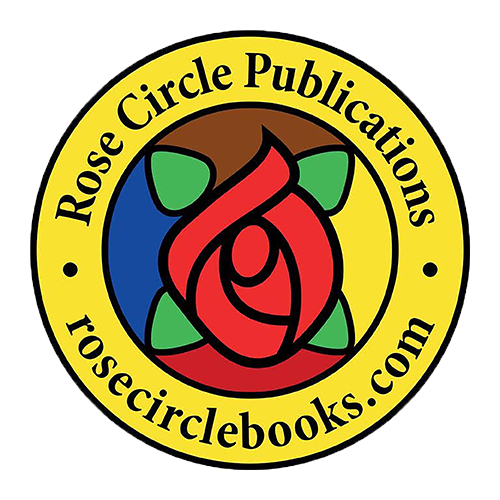
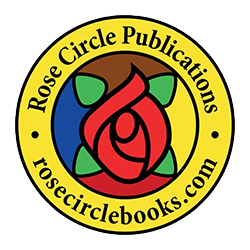
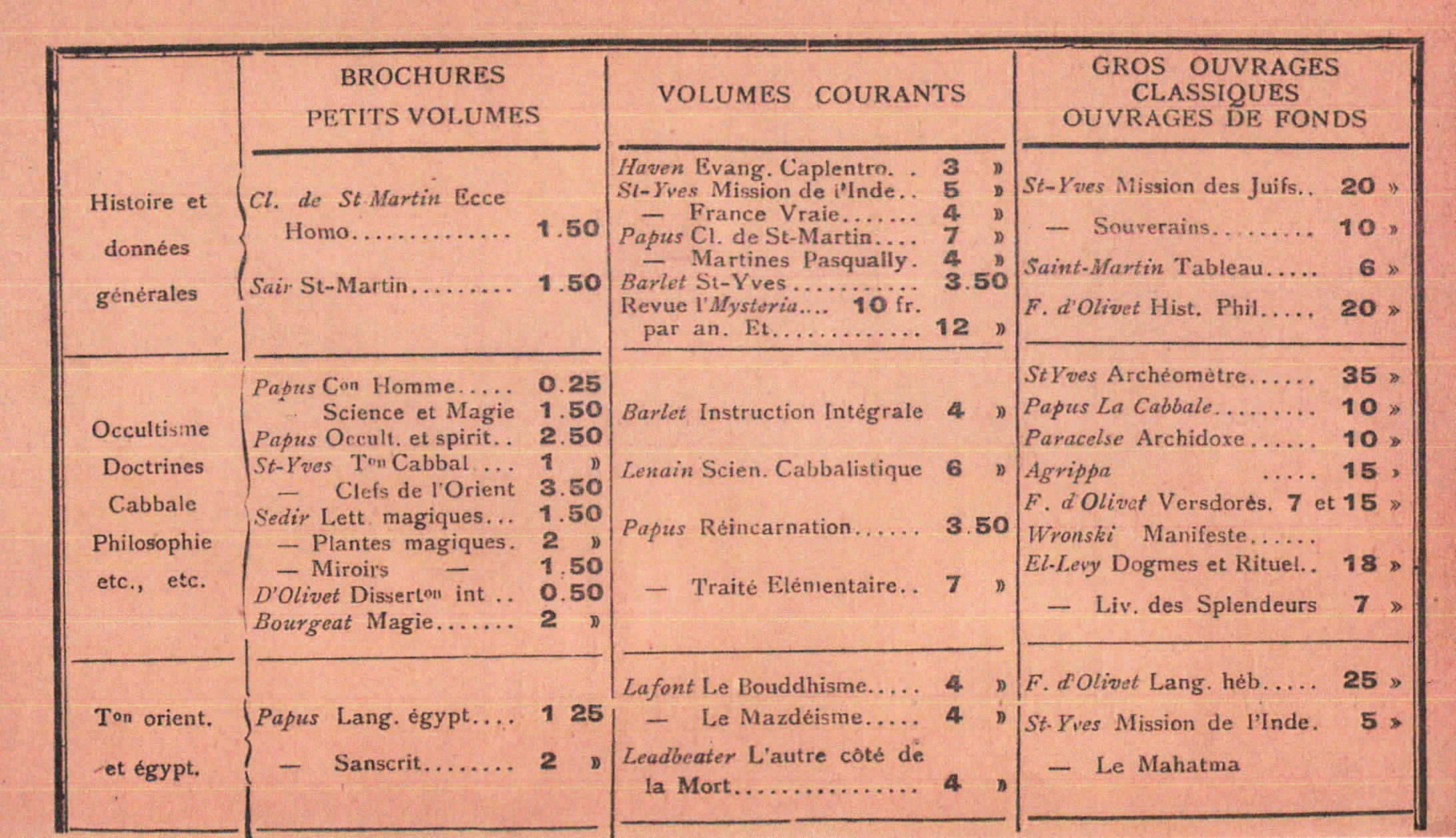
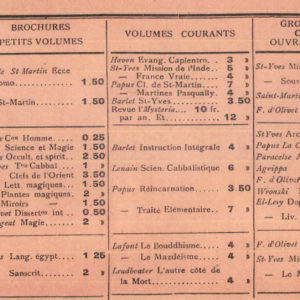
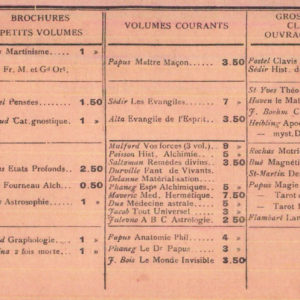
Comments (2)